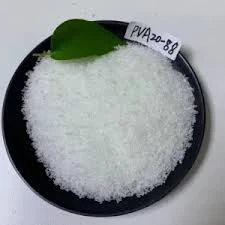The Importance of Hydroxypropyl Methylcellulose (HPMC) in Various Industries
Hydroxypropyl methylcellulose (HPMC) is a non-ionic, water-soluble polymer derived from cellulose, which is one of the most abundant natural polymers on Earth. With its unique chemical structure, HPMC has gained significant importance in numerous industries, including pharmaceuticals, food, cosmetics, and construction. This article explores the chemical composition, properties, and applications of HPMC, emphasizing its relevance in modern manufacturing processes.
Chemical Composition and Properties
HPMC is produced by the chemical modification of cellulose, which involves the substitution of hydroxyl groups (-OH) in the cellulose polymer backbone with hydroxypropyl and methyl groups. This modification enhances the polymer's solubility in water and organic solvents, making it an ideal candidate for a wide range of applications.
The chemical formula for HPMC varies based on its specific composition, with different grades available that correspond to varying degrees of hydroxypropyl and methyl substitution. Typically, the methoxy content in HPMC ranges from 19% to 30%, while the hydroxypropyl content can vary, impacting its viscosity and solubility. These variations allow manufacturers to tailor HPMC to specific applications by selecting the right grade for their needs.
One of the standout features of HPMC is its ability to form gels and films upon hydration, making it a versatile material for various formulations. Additionally, it is a reliable thickening agent, stabilizer, and emulsifier, which adds to its appeal across different sectors.
Applications in Pharmaceuticals
In the pharmaceutical industry, HPMC is widely used as an excipient in drug formulations. Its properties as a binder make it ideal for tablet formulations, enhancing the cohesion of the active ingredients. Furthermore, HPMC is essential in controlled-release drug delivery systems, allowing for the gradual release of medication over an extended period. This performance helps to improve patient compliance and minimize side effects.
Moreover, HPMC is utilized in the production of ophthalmic solutions and gels. Its ability to retain moisture and provide a smooth texture makes it an effective lubricant in eye drops, aiding in the relief of dry eye conditions.
chemical hpmc hydroxypropyl methyl cellulose

Relevance in Food Industry
In the food industry, HPMC serves as a versatile food additive. It is employed as a thickener, stabilizer, and emulsifier in products such as sauces, dressings, and dairy items. Its water-retaining properties help maintain food texture and freshness, improving overall product quality. Furthermore, HPMC is often used in gluten-free formulations as a functional ingredient to enhance the texture and mouthfeel of baked goods.
The versatility of HPMC in the food sector is due to its generally recognized as safe (GRAS) status, allowing it to be incorporated into various food products without health concerns.
Role in Cosmetics and Personal Care
The cosmetic industry also extensively uses HPMC due to its thickening and film-forming capabilities. It is commonly found in creams, lotions, shampoos, and conditioners, where it helps improve product consistency and enhances skin feel. HPMC acts as a stabilizing agent in emulsions, contributing to the stability and shelf life of cosmetic formulations.
Contributions to Construction
In construction, HPMC serves as a crucial component in tile adhesives, sealants, and plaster. It enhances the workability of mortars and improves the adhesion of construction materials. Its water retention properties ensure that construction materials remain workable longer, accommodating various environmental conditions during application.
Conclusion
Hydroxypropyl methylcellulose (HPMC) is a remarkable polymer with myriad applications across several industries. Its unique chemical properties allow it to function effectively as a thickener, binder, and emulsifier, making it a valuable ingredient in pharmaceuticals, food, cosmetics, and construction. As industries continue to innovate, the significance of HPMC is poised to grow, underscoring the need for ongoing research and development in this versatile polymer. The adaptability and safety profile of HPMC make it a hallmark of modern manufacturing processes, reflecting a commitment to quality and performance across various applications.
-
Rdp Powder: Key Considerations for Wholesalers in the Building Materials IndustryNewsJul.08,2025
-
Key Considerations for Wholesalers: Navigating the World of Hpmc - Based ProductsNewsJul.08,2025
-
Hpmc Detergent: Key Considerations for WholesalersNewsJul.08,2025
-
Key Considerations for Wholesalers: China Hpmc For Tile Adhesive, Coating Additives, Concrete Additives, and MoreNewsJul.08,2025
-
Crucial Considerations for Wholesalers: Navigating the World of Construction MaterialsNewsJul.08,2025
-
Key Considerations for Wholesalers Sourcing Additive For Cement, Additive For Concrete, Additive For Putty from Additive Manufacturer Shijiazhuang Gaocheng District Yongfeng Cellulose Co., Ltd.NewsJul.08,2025




